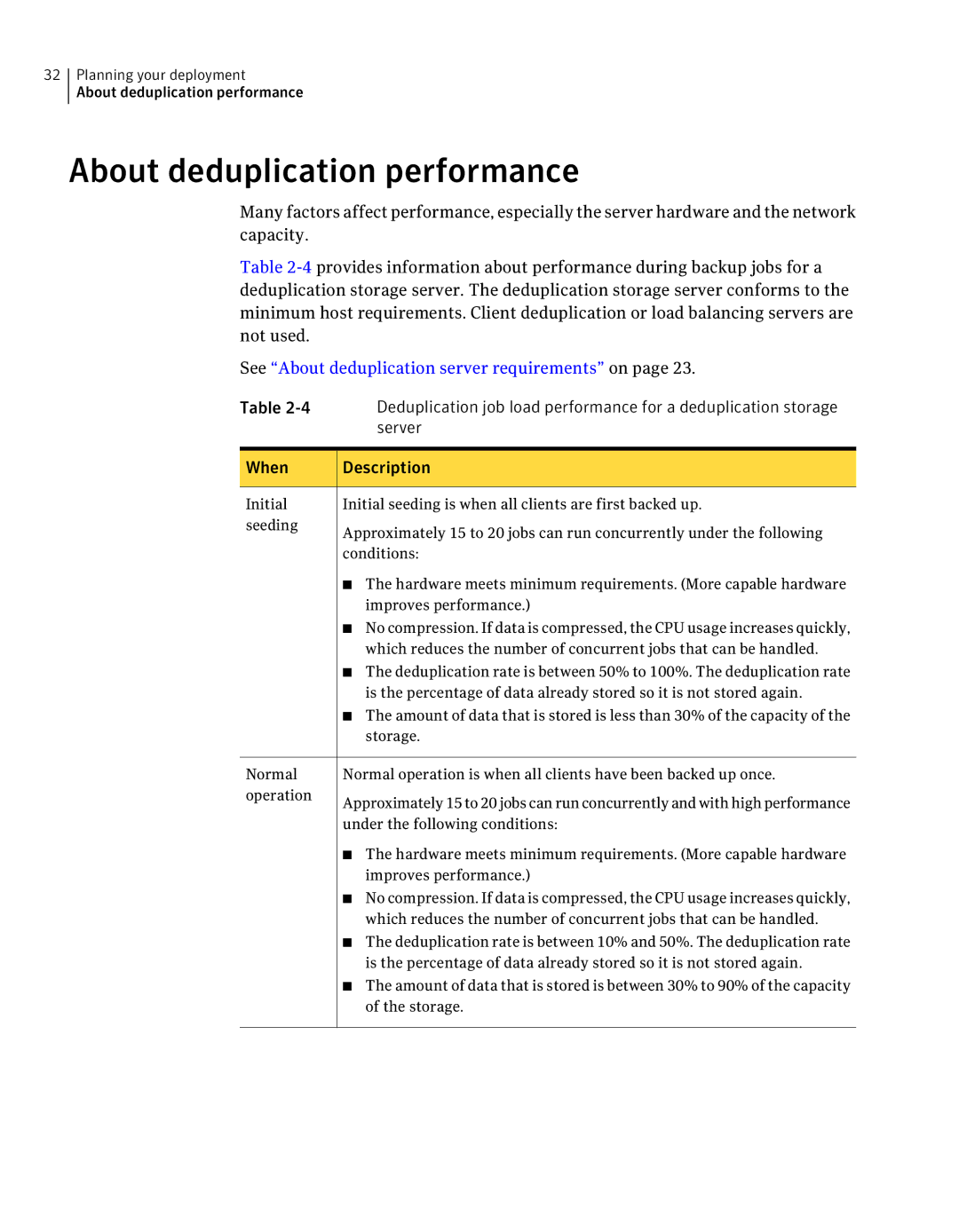
32Planning your deployment
About deduplication performance
About deduplication performance
Many factors affect performance, especially the server hardware and the network capacity.
Table
See “About deduplication server requirements” on page 23.
Table
When
Initial seeding
Normal operation
Deduplication job load performance for a deduplication storage server
![]() Description
Description
Initial seeding is when all clients are first backed up.
Approximately 15 to 20 jobs can run concurrently under the following conditions:
■The hardware meets minimum requirements. (More capable hardware improves performance.)
■No compression. If data is compressed, the CPU usage increases quickly, which reduces the number of concurrent jobs that can be handled.
■The deduplication rate is between 50% to 100%. The deduplication rate is the percentage of data already stored so it is not stored again.
■The amount of data that is stored is less than 30% of the capacity of the storage.
Normal operation is when all clients have been backed up once.
Approximately 15 to 20 jobs can run concurrently and with high performance under the following conditions:
■The hardware meets minimum requirements. (More capable hardware improves performance.)
■No compression. If data is compressed, the CPU usage increases quickly, which reduces the number of concurrent jobs that can be handled.
■The deduplication rate is between 10% and 50%. The deduplication rate is the percentage of data already stored so it is not stored again.
■The amount of data that is stored is between 30% to 90% of the capacity of the storage.
